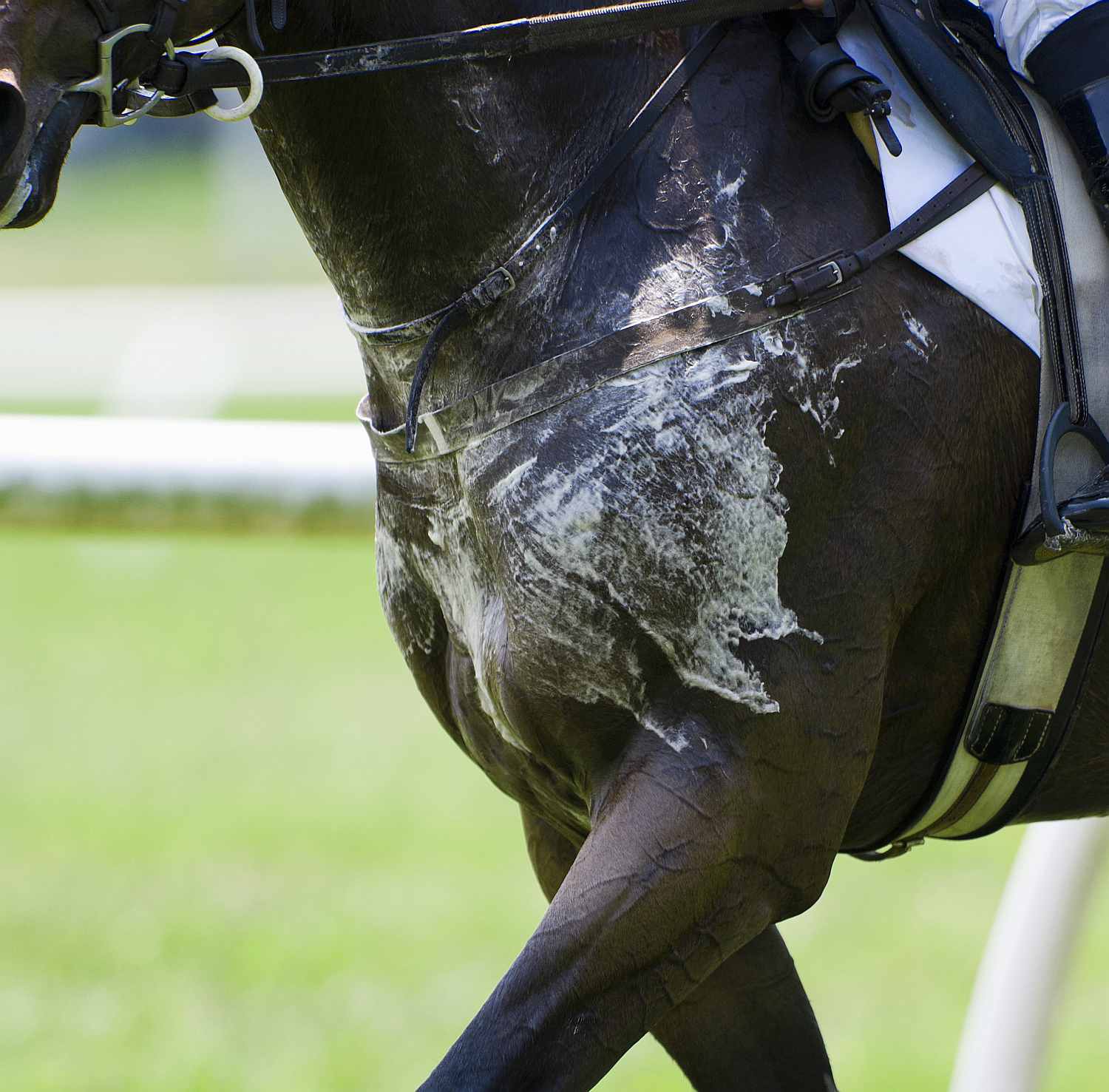Dr David Wood BVSc, MRCVS
Victorian sensibilities insisted that only horses ‘’sweat’’, whilst gentlemen ‘’perspire’’ and ladies ‘’glow’’. That said, hopefully we can discuss horse sweat without causing offence to any Victorians out there, because it turns out that there’s much more to sweat than we used to think.
We all understand that sweat contains a mixture of water and various salts known as electrolytes for the electrical charge, + or – which they carry. These charged ions found in horse sweat include Sodium, Potassium, Calcium and Magnesium, all of which carry a positive charge, plus Chloride and a trace of Phosphate with negative charges.
A 450kg horse in moderate work, mainly trotting, will lose about 4.5 litres of sweat per hour in mild conditions of 10 – 25 degrees C. In hot and humid conditions, the rate of loss jumps to 10 to 20 litres per hour. The table below shows the ion content of electrolytes in normal sweat and the rate of loss per hour by a horse exercising in such mild weather.

Obviously, the big losses are in Sodium and Chloride, i.e. Salt, with much lower proportions of the other electrolytes, as highlighted below when we look at the approximate percentage content.

The electrolyte content of sweat comes to a total of only around 12 grams in every litre which doesn’t seem like very much until you multiply it by all the litres of sweat which may be lost in a day when it starts to add up and need replacing with some salt or electrolyte supplement.
Until several years ago that was pretty much all we knew about sweat composition and all we thought we needed to know, but now things have certainly changed:
Latherin. If you ever wondered what causes the foam on a sweaty horse, the answer is Latherin. This remarkable protein is found in the salivary glands of horses and also in their sweat where it acts as a surface- active ‘’surfactant’’ or detergent. Rather like a soil wetting agent Latherin helps spread the sweat liquid in a thin film across the oily hair coat and penetrate down to the skin surface where it’s evaporation will cause the most effective cooling. The foam is not a sign the horse has been overexerted but rather that the sweat system is working properly. Foam is most obvious where skin rubs on skin or tack – just as soap foams when you rub your hands together. Coincidentally, Latherin is also highly allergenic and responsible for most of the horse allergies seen in humans.
Along with Latherin and electrolytes, Australian researchers have now demonstrated the presence of significant amounts of certain Amino Acids in sweat. Some of these like Serine and Histidine occur in far higher concentrations in the sweat than in the plasma, indicating that active transport mechanisms are in play. The presence of these amino acids may in part be related to conserving sodium which is actively resorbed by the sweat gland near the skin surface. Losing too much sodium from the body would cause severe disruption, hence the need to conserve this electrolyte.
When a team from the University of Newcastle studied the amino acids lost in sweat by exercising horses, they determined that the losses were enough to deplete between 40% and 70% of the circulating reserves of free amino acids. The demand for some of these rises during training to achieve peak fitness and when supply is short following exercise then muscle tissue is broken down to replenish the reservoir.
By understanding the profile of amino acids lost in sweat and calculating which ones were most likely to influence recovery from exercise it was possible to develop a specific amino acid supplement to prevent the potential negative effects. In a collaboration between the University and Horsepower a new generation amino acid supplement for replacing sweat losses called Recovery BOOSTAA was launched in late 2019. Paralleling the work in horses a research project in humans by the same group has led to similar supplements for human athletes under the brand name InovAAte.
So, whether its sweating, perspiring or merely developing a “glow’’, there are now supplements tailored to replace what is lost, the most important being, as it always was, plain old water!


